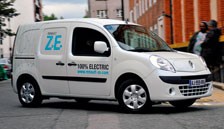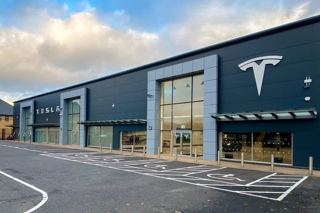Many supporters of low-emission vehicles see electric vans as the future for urban operations, but are they?
Manufacturers place great emphasis on their “zero emissions”, but the definition is actually zero ”tailpipe” emissions.
The energy they use has to be generated somewhere and in the UK this is mainly in coal and gas fired power stations which use fossil fuels.
There are, of course, significant benefits provided by running electric vehicles, but only in the right operations.
If a fleet attempts to run an electric van on the same replacement cycle as an equivalent diesel model, then the numbers simply do not stack up.
Why? Vastly increased depreciation, mainly because of the cost of batteries and the unknowns surrounding their operating life.
Some manufacturers have quoted initial purchase prices of around £30,000 for a small van and about £10,000 for a replacement battery pack.
Manufacturers quote varying statistics on vehicle range, number of charge cycles before degradation, overall battery life etc. Because this is untried technology, no-one really knows.
What we do know is that initial purchase prices are several times more than diesel versions, but the “fuel” is in effect being bought in advance.
The cost of a full recharge is very low, especially if carried out overnight at off-peak rates.
However, some models require specialised three-phase dedicated charging points, which have to be taken into account during the business case process.
The net result of this is that CAP estimates the break-even point for a pure electric van is between six and seven years, depending on battery life.
CAP also recommends that batteries are always included in the initial purchase price to avoid potential legal problems arising from dual financing or insurance claims.
From a dealer’s point of view it’s critical to qualify potential clients very carefully. If someone wants to operate an electric van in order to reduce costs, they are highly unlikely to succeed in the short term.
If they want to be “seen to be green” and have the budget to fund it, then their environmental marketing benefit can outweigh the short-term operational costs.
Another important factor is to ensure that the durability of the basic vehicle is sufficient to cope with urban operations over a minimum of seven years.
When the electric van has reached break-even at six-seven years, although the battery may be in good condition, the van itself may be worn out and worth little.
In comparison with electric cars, the electric van is even more expensive new than its conventional counterpart.
This means a longer period is required to recoup the additional expenditure and the issue of battery life is even more significant.
For example, a Peugeot Bipper base model has a list price of £10,595 + VAT. The equivalent Allied E-Bipper van retails at £40,950. An operator can buy a considerable quantity of diesel for the difference in capital cost.
In a worst-case scenario, therefore, it may turn out that the bulk of the value in an aged electric van could lie in the value of the battery pack as a power source for something other than the vehicle in which it was fitted.

















Login to comment
Comments
No comments have been made yet.